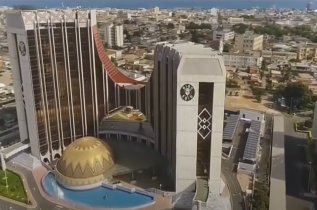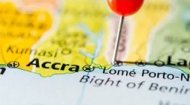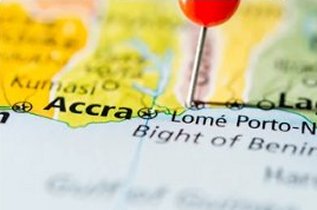|
Lomé's economic vitality is primarily driven by its strategic location and its status as a significant port city in West Africa. The Port of Lomé is a deep-water, natural harbour and one of the most important free trade zones in the sub-region. It serves not only Togo but also landlocked countries like Burkina Faso, Niger, and Mali, acting as a crucial gateway for imports and exports. This robust maritime activity fuels a thriving sector of logistics, warehousing, and customs services, generating substantial revenue and employment opportunities.
The social profile of Lomé is rich and complex, a vibrant mosaic of ethnic groups, languages, and traditions. The dominant ethnic groups are the Ewe and Mina, but the city is home to 2.1m people from all regions of Togo, including the Kabye, Ouatchi, and many others, as well as a significant population of West African and international residents. This diversity is reflected in the linguistic landscape, where French, the official language, coexists with a multitude of local languages, particularly Ewe and Mina, which are widely spoken. |
Lomé Profile |
Lomé Profile |
Lomé Profile | Lomé Profile |
|
|

|
Religion also plays a crucial role in Lomé's social life. Christianity, primarily Catholicism and various Protestant denominations, is widely practised, evident in the numerous churches dotting the cityscape. Islam has a significant following, particularly in certain neighbourhoods, with mosques serving as important community centres. Traditional African religions and belief systems also persist, often intertwined with Christian and Islamic practices, reflecting a deep spiritual heritage. This religious pluralism fosters a sense of tolerance and allows for a rich array of festivals and ceremonies throughout the year. Education and healthcare infrastructure are developing, with universities, schools, and hospitals striving to meet the demands of a growing urban population, highlighting the ongoing efforts to improve the quality of social services for all residents. Daily life in Lomé is a mix of tradition and modernity, hustle and relaxation. The city awakens early, with the sounds of street vendors, the hum of traffic, and the calls to prayer or church bells filling the air. Commuting is often characterised by "zemidjans" – motorcycle taxis – which weave deftly through traffic, and shared taxis that ply established routes. Streets are bustling with activity, from makeshift food stalls selling local delicacies like akoumè (corn dough) and grilled fish, to small shops stacked high with goods. Family and community play central roles in Lomé's daily life. Even in the urban setting, extended family ties remain strong, providing a crucial support network. Evenings often involve gathering with loved ones, perhaps enjoying a meal together or simply socialising. Weekends might see residents flocking to the city's beaches for relaxation, attending church services, or visiting one of the many vibrant markets. Despite the urban environment, a certain relaxed pace pervades, especially during the hot afternoons. However, underlying this rhythm are the constant efforts of individuals striving to make a living, pursue education, and build better futures for themselves and their families, embodying the resilient spirit of Lomé. Like many rapidly growing cities in West Africa, Lomé grapples with a range of challenges that impact its development and the quality of life for its inhabitants. Rapid urbanisation has strained existing infrastructure, leading to issues such as inadequate housing, traffic congestion, and insufficient public services like waste management and sanitation. Environmental degradation is another pressing concern; coastal erosion, exacerbated by climate change, poses a significant threat to the city’s coastline and its future viability. Flooding during the rainy season is also a recurring problem, particularly in low-lying areas. Socio-economic disparities represent a persistent challenge. While the city boasts areas of relative affluence, many residents live in informal settlements with limited access to clean water, electricity, and healthcare. High rates of unemployment, especially among youth, drive many into the informal sector, often with precarious incomes. Political stability, while generally improved, remains a background consideration, with historical periods of unrest reminding residents of potential fragilities. Addressing these complex challenges requires sustained investment in infrastructure, robust urban planning, effective environmental policies, and inclusive economic growth strategies to ensure a more equitable and sustainable future for all Loméans. Despite its challenges, Lomé offers a compelling array of tourist attractions that showcase its unique charm and cultural depth. The city's coastline boasts pristine, palm-fringed beaches, such as Lomé Beach, offering a tranquil escape from the urban bustle. Here, visitors can relax, enjoy fresh seafood, and witness local fishermen at work. For those interested in local culture and commerce, the Grand Marché is an unmissable experience. This sprawling market sells everything from intricately woven fabrics and traditional medicines to modern electronics. A more esoteric attraction is the Akodésséwa Fetish Market, reputedly the largest voodoo market in the world. Here, practitioners purchase various animal parts, skulls, and ritual objects used in traditional Ewe and Fon religious ceremonies, offering a rare glimpse into a misunderstood spiritual world. Historical and architectural landmarks are plentiful. The Independence Monument stands proudly as a symbol of Togo's sovereignty, while the National Museum of Togo houses artefacts that trace the nation's rich history and cultural heritage. The majestic Lomé Cathedral, a stunning example of German colonial architecture, and the equally impressive Great Mosque of Lomé reflect the city's religious diversity. Visitors can also explore the Artisan Village, where local craftsmen create and sell a variety of wood carvings, textiles, and other traditional artworks, providing perfect souvenirs and insight into local craftsmanship. These tourist attractions collectively paint a vivid picture of Lomé's multifaceted character, inviting visitors to delve deeper into its captivating allure. |
 The German influence is still subtly visible in some architectural styles and street layouts, though much has evolved. At the outbreak of the First World War on 26th August 1914, Schutzgeblet Togo was occupied by the Allies with the territory being divided in 1916 into two administrative areas run by the British and French with Lomé itself coming under British occupation.
The German influence is still subtly visible in some architectural styles and street layouts, though much has evolved. At the outbreak of the First World War on 26th August 1914, Schutzgeblet Togo was occupied by the Allies with the territory being divided in 1916 into two administrative areas run by the British and French with Lomé itself coming under British occupation. Beyond its port, Lomé's economic activities are diversified. Trade, both formal and informal, forms the backbone of the city's commerce. The Grand Marché, or central market, is a chaotic yet captivating spectacle, where goods ranging from textiles and foodstuffs to electronics and traditional crafts are bought and sold. Small and medium-sized enterprises (SMEs) are ubiquitous, contributing significantly to local economies. While industrialisation is nascent, there are growing sectors in light manufacturing, agro-processing, and a budding services industry, including banking, telecommunications, and tourism. The city also hosts the headquarters of regional financial institutions, underscoring its role as a financial hub. Despite these strengths, the economy faces challenges related to infrastructure development, access to capital for small businesses, and the need for greater diversification to create sustainable growth and reduce unemployment.
Beyond its port, Lomé's economic activities are diversified. Trade, both formal and informal, forms the backbone of the city's commerce. The Grand Marché, or central market, is a chaotic yet captivating spectacle, where goods ranging from textiles and foodstuffs to electronics and traditional crafts are bought and sold. Small and medium-sized enterprises (SMEs) are ubiquitous, contributing significantly to local economies. While industrialisation is nascent, there are growing sectors in light manufacturing, agro-processing, and a budding services industry, including banking, telecommunications, and tourism. The city also hosts the headquarters of regional financial institutions, underscoring its role as a financial hub. Despite these strengths, the economy faces challenges related to infrastructure development, access to capital for small businesses, and the need for greater diversification to create sustainable growth and reduce unemployment.







